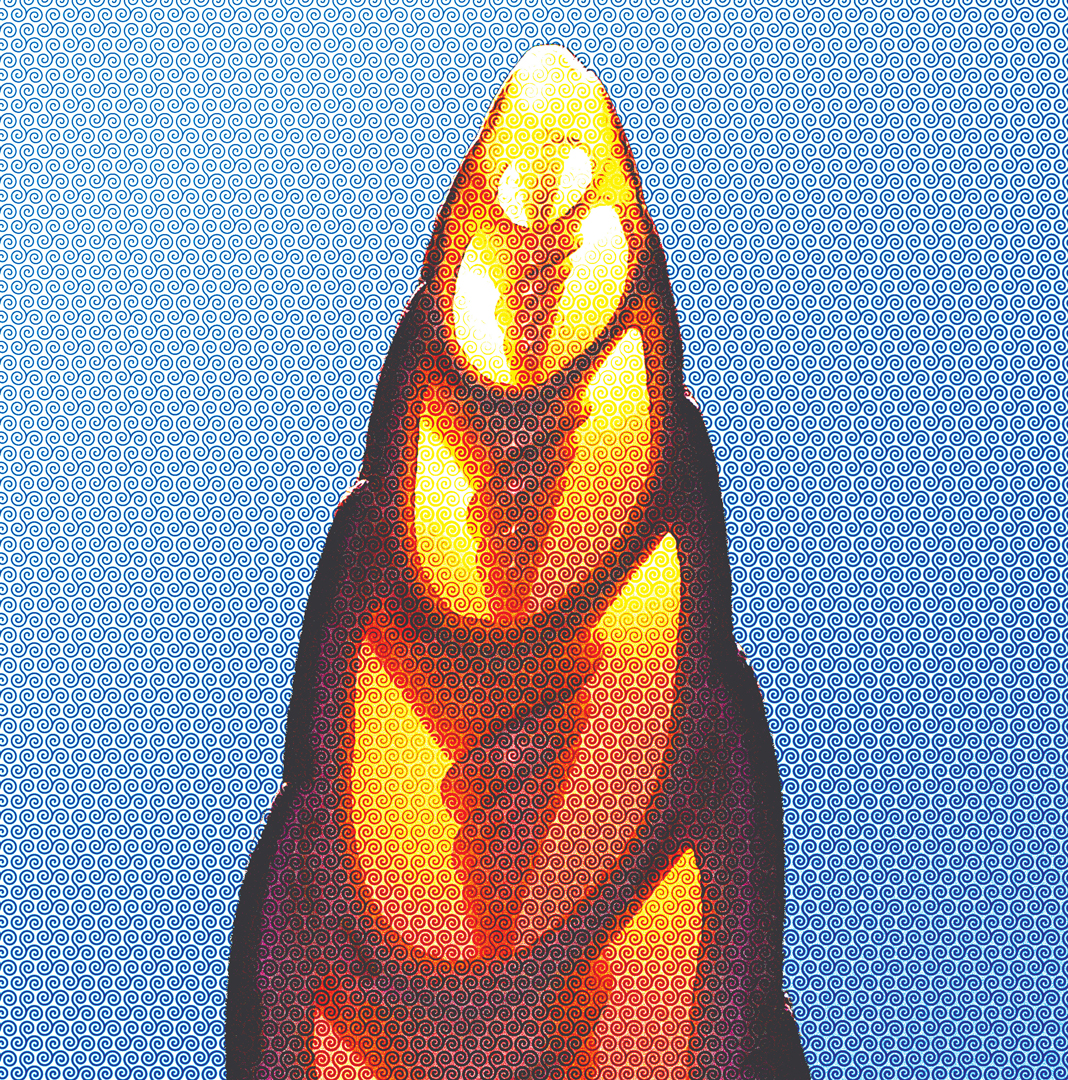“Multi-color and artistic dithering” by Ostromoukhov and Hersch
Conference:
Type(s):
Title:
- Multi-color and artistic dithering
Presenter(s)/Author(s):
Abstract:
A multi-color dithering algorithm is proposed, which converts a barycentric combination of color intensities into a multi-color non-overlapping surface coverage. Multi-color dithering is a generalization of standard bi-level dithering. Combined with tetrahedral color separation, multi-color dithering makes it possible to print images made of a set of non-standard inks. In contrast to most previous color halftoning methods, multi-color dithering ensures by construction that the different selected basic colors are printed side by side. Multi-color dithering is applied to generate color images whose screen dots are made of artistic shapes (letters, symbols, ornaments, etc.). Two dither matrix postprocessing techniques are developed, one for enhancing the visibility of screen motives and one for the local equilibration of large dither matrices. The dither matrix equilibration process corrects disturbing local intensity variations by taking dot gain and the human visual system transfer function into account. Thanks to the combination of the presented techniques, high quality images can be produced, which incorporate at the micro level the desired artistic screens and at the macro level the full color image. Applications include designs for advertisements and posters as well as security printing. Multi-color dithering also offers new perspectives for printing with special inks, such as fluorescent and metallic inks.
References:
1. H. Boll, “A Color to Colorant Transformation for a Seven Ink Process”, in Device Independent Color Imaging (Ed. E. Walowit), SPIE Proceedings, Volume 2170, pages 108-118, 1994.
2. J. Geraedts, S. Lenczowski, “Oc6’s productive colour solution based on the Direct Imaging Technology”, Proceedings IS&T International Conf. on Digital Printing Technologies (NIP- 13), pages 728-733, 1997.
3. I. Hargittai, M. Hargittai, SymmenT, A Unifying Concept, Shelter Publ., 1994.
4. EC. Hung, Colorimetric calibration in electronic imaging devices using a look-up-table model and interpolations, Journal of Elecronic Imaging, 2 (1), pages 53-61, 1993.
5. International Color Consortium. Specification ICC.1:1998- 09. http://www.color.org.
6. H.R. Kang, Color Technology for Elecnvnic Imaging Devices, SPIE Publication, 1997.
7. R.V. Klassen, R. Eschbach, K. Bharat, Vector Error Diffusion in a Distorted Colour Space, Proc. of IS&T 47th Annual Conference, 1994, Reprinted in Recent Progress in Digital Halftoning, (Ed. R. Eschbach), IS&T Publication, pages 63-65, 1994.
8. K.T. Knox, Printing with Error Diffusion, in Recent Progress in Digital Halftoning (Ed. R. Eschbach), IS&T Publication, pages 1-5, 1994.
9. H. KiJppers. Die Farbenlehre der Fernseh-, Foto- und Drucktechnik: Farbentheorie der visuellen Kommunikationsmedien. DuMont Buchverlag, K61n, 1985.
10. US Patent 4,812,899, issued March 14, 1989, filed Dec 19, 1986, Inventor: H. Kueppers.
11. G.E. Martin, Transformation Geomen3;. An Introduction to Symmetry. Springer-Verlag, 1982.
12. G.M. Nielson, H. Hagen, H. MiJller, Scientific Visualization, IEEE Computer Society, 1997.
13. L. Olzak, J.E Thomas, Seeing spatial patterns, in Handbook of perception and human pelformance, (Eds. K. R. Boff, L. Kaufman, J. E Thomas), Chapter 7, J. Wiley, pages 7-1 to 7- 55, 1986.
14. V. Ostromoukhov, Chromaticity Gamut Enhancement by Heptatone Multi-Color Printing, in Device-Independent Color Imaging and Color Imaging Systems Integration, Proc. SPIE, Vol. 1909, pages 139-151, 1993
15. V. Ostromoukhov, R.D. Hersch, Artistic Screening, Proceedings of SIGGRAPH 95, Annual Conference Series, pages 219- 228, 1995.
16. T. N. Pappas, Model-based halftoning of color images, IS&T 8th International Congress on Advanced in Non-Impact Printing Technologies, 1992, reproduced in Recent Progress in Digital Halftoning (Ed. R. Eschbach), IS&T Publication, pages 144-149, 1994.
17. G.L. Rogers, “Neugebauer Revisited: Random Dots in Halftone Screening”, Color Research and Applications, 23 (2), pages 104-113, 1998.
18. C.J. Rosenberg, “Measurement based verification of an electrophotographic printer dot model for halftone algorithm tone correction”, IS&T 8th International Congress in Non-Impact Printing Technologies, Oct. 25-30, 1992, Reprinted in Recent Progress in Digital Halftoning, (Ed. R. Eschbach), IS&T Publication, pages 159-163, 1994.
19. E. J. Stollnitz, V. Ostromoukhov, D. H. Salesin, Reproducing Color Images Using Custom Inks, Proceedings of SIG- GRAPH 98, Annual Conference Series, pages 267-274, 1998.
20. J. R. Sullivan, R. L. Miller, T. J. Wetzel, Color digital halftoning with vector error diffusion, US Patent 5,070,413, 1991.
21. R. Ulichney, Digital Halftoning, The MIT Press, Cambridge, Mass., 1987.
22. R. L. Van Renesse (Ed.), Optical Document Security, Artech House, 1998.
23. B.A. Wandell, Foundations of Vision, Sinauer Associates, Inc. Publishers, Sunderland, Mass., 1995.
24. J.A.C. Yule. Principles of Color Reproduction. John Wiley & Sons, New York, 1967.




